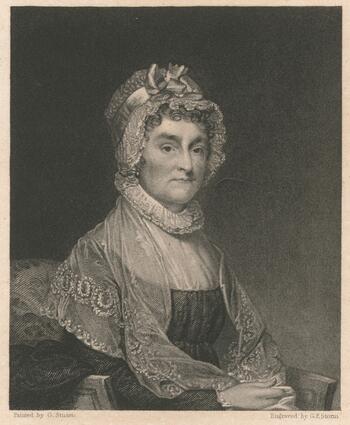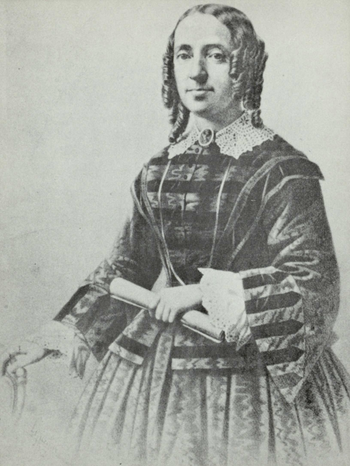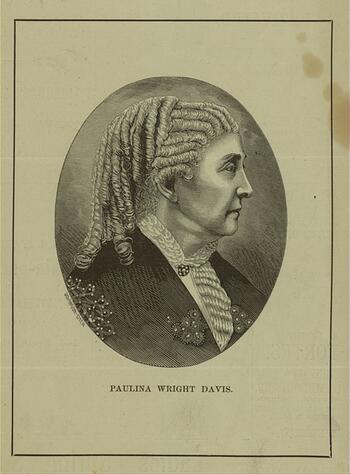Women’s Rights emerged as an issue during the American Revolution. Abigail Adams warned her husband not to adopt the repressive code of common law, or the ladies were “bound to foment a rebellion.” Still, women lost legal ground with the formation of the United States after the American Revolution. While women had voted under some conditions in the colonies, women lost the right to vote in all state constitutions between 1777 and 1807. Suffragists in 19th century maintained that they were not asking for a new right, but for the restitution of a right their foremothers possessed.
Women had developed their organizational skills a decade before the Seneca Falls convention, forming Female Anti-Slavery societies as early as 1833. By 1837, Female Anti-Slavery societies had become numerous and strong enough that they held their first national convention in New York City. Maria Weston Chapman hailed the convention as "the first general one of women ever held in our country, if not in the world."
Ernestine L. Rose and Paulina Wright Davis circulated petitions in support of an 1836 bill introduced into the New York Legislature by Judge Hertell to secure married women their rights of property. The Married Women's Property Act finally passed the legislature in the spring of 1848.
This engraving from 1839 depicts Abigail Adams, the closest advisor and wife of John Adams. Abigail wrote a letter to John in 1776 while he participated at the First Continental Congress in Philadelphia, urging the Founding Fathers to “remember the ladies.” She wrote, “Do not put such unlimited power into the hands of the husbands. Remember all men would be tyrants if they could.” Courtesy of the New York Public Library.
Letter from Anne Warren Weston, Sans Souci, New York, to Maria Weston Chapman, May 13, 1840. In this letter, Anne Warren Weston gives a detailed report of the anniversary meeting of the American Anti-Slavery Society. Courtesy of the Boston Public Library.
This postcard depicts Ernestine L. Rose, who was a freethinker, feminist, and abolitionist. In 1838, she submitted the first petition to the New York State Legislature in favor of women’s rights, in support of Judge Thomas Hertell’s Married Women’s Property Act. Courtesy of Georgia State University Libraries, Special Collections.
Print engraving of Paulina Wright Davis. Davis was an abolitionist, suffragist, and educator, and worked to garner support for New York’s Married Women’s Property Act, which passed the legislature in April of 1848. The law significantly changed property rights for married women, allowing them to control and own their own property. Courtesy of the New York Public Library.



